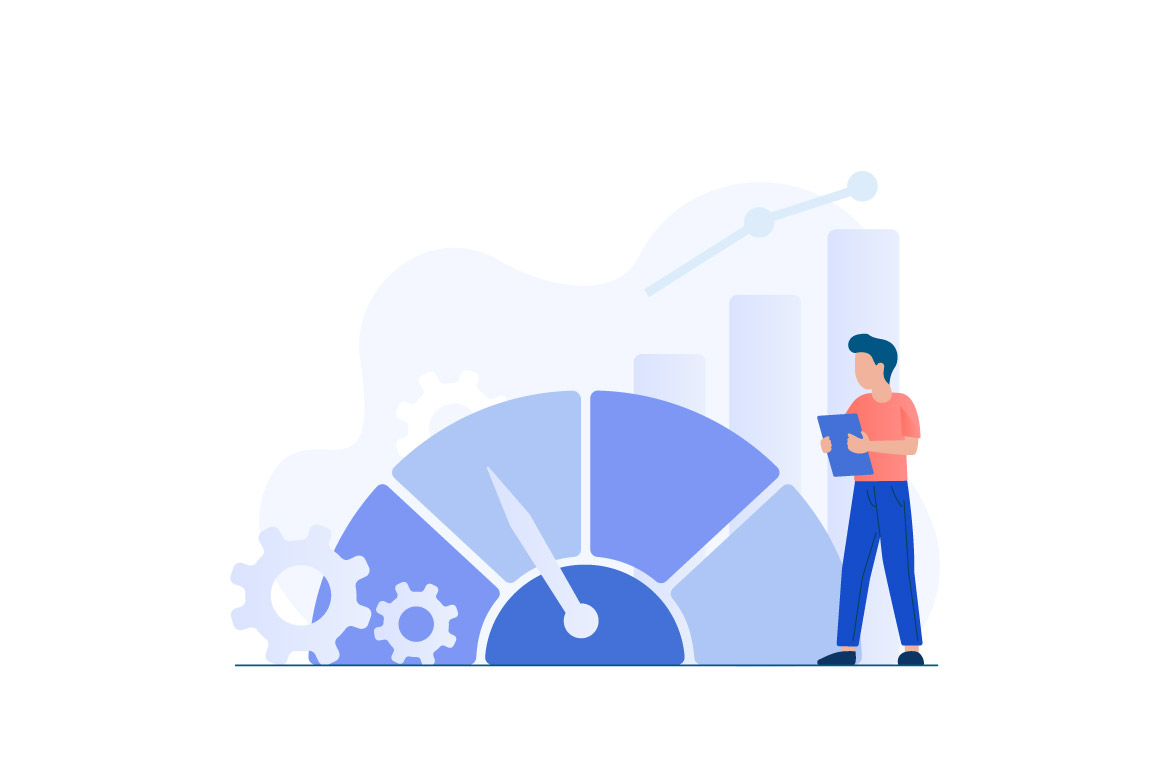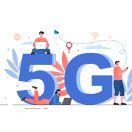Outsourcing customer service to call centers has been a common practice among businesses of all sizes, for decades. But, to assure their clients of optimum growth and enhanced customer experience, call centers must consider measuring the performance and productivity of their customer support executives. This enables them to understand how well the job is currently being done, and what actions need to be taken to increase the efficiency level of the team. Metrics and KPIs are often considered powerful tools for measuring a call center’s performance. Also, these help organizations set and track goals. Call center metrics are used to measure the overall effectiveness of customer service teams, and key performance indicators (KPIs) are monitored to understand how effectively a call center solution achieves business goals. Though each call center has its unique ways of measuring its performance, there are a few common standards for metrics and KPIs in the call center industry. However, ideally, an organization must primarily measure customer experience, agent productivity, call initiation, and call center operations to increase customer satisfaction.
12 essential performance and productivity-measuring metrics and KPIs:
-
- Average Handle Time (AHT)
It is a KPI that helps call center managers understand the amount of time the agents are spending on each call, on average. Shorter AHTs usually mean that the customers’ queries are resolved quickly. Longer AHTs often indicate that the agents are not being able to resolve queries promptly. In such a case, the call center must introduce effective training sessions to make sure the agents perform better. However, it must also be kept in mind that certain complex issues do require longer handling times. By monitoring AHT, one can figure out the minimum and maximum amount of time needed to address and resolve an average problem.
- First Response Time (FRT)
Using FRT, one can track the percentage of calls, on which the agent has resolved customer inquiries, without increasing the call transferred rate, escalating, or returning the call. As FRT relates to a customer’s satisfaction level, it is often considered one of the most crucial call center KPIs. FRT values help businesses understand when they need to hire more agents to make sure their customers’ issues get resolved quickly.
- Average Speed of Answer(ASA)
It is the average time an agent takes to answer inbound calls. The average ASA, as per the industry standard, is around 28 seconds. Longer ASA often increases the chance of customer dissatisfaction and indicates agent absenteeism. - Agent Utilization Rate (AUR)
The AUR can be calculated by dividing the number of hours an agent worked by his/her work availability. For example, when an agent is on customer calls for 7 hours out of an 8-hour shift, the utilization rate of that agent for that day would be 87.5% (7 hours worked ÷ 8 available hours). - Average Call Abandonment Rate
When it comes to inbound call centers, the average call abandonment rate is the percentage of abandoned calls before a customer speaks to an agent. The number of abandoned calls, that end before reaching an agent, is divided by the total number of inbound calls to get the rate. The calls that the customers end up disconnecting while they’re in the queue, or listening to the menu options, are also viewed as abandoned calls. A call center must always aim for a low call abandonment rate. - Customer Satisfaction (CSAT)
This KPI helps one to measure how happy the customers are with the provided service/s. In the case of CSAT, customers are directly asked about their satisfaction level, requested to rate their experience, and leave feedback. CSAT feedback forms are generally sent out immediately after calls end. - Average time in queue
As queue times often depend on the call volume per hour, assessing the average time in queue sometimes turns out to be quite difficult. The customer support executives experience a massive surge in the total number of calls during peak hours. To keep the average time in queue as short as possible and ensure quick turnaround time for customers, a call center must hire more executives. When an organization observes that the customers’ average time in queue is constantly getting higher, it should consider getting its staffing issue fixed. - Average after-call work time (AWT)
AWT shows how long agents take to process tickets between calls. Many times, customers come up with issues that don’t need to be resolved right away. In such cases, agents often make a note of the issues, hang up, and then resolve the same. Longer AWT makes sure customers are not being requested to hang tight when the agents work silently in front of their computer screens, and agents are less likely to fumble, as there is no pressure of finishing the task instantaneously. - First call resolution (FCR)
It helps one to get an idea about how often customers’ queries are resolved the first time they reach out to the support team. Higher FCR rates often lead to greater customer satisfaction levels. - Revenue per successful call
The monetary value of each successful call can be measured by keeping a track of the average amount of revenue that a successful call can generate. It shows the number of products, on average, the callers are getting directed to. Also, it helps one to understand if his/her agents are hitting their sales target. By considering the revenue-generating products that are helping agents meet their targets, one can easily make out which products are the most popular. - Net promoter score (NPS)
Measured on a scale of -100 to 100, NPS is used to put a number to customer satisfaction. Customers are requested to fill out an NPS survey form that asks if they will recommend the brand to a friend or family member. A company can expect extensive word-of-mouth promotion when the NPS gets higher. - Customer effort score (CES)
Designed to measure the amount of effort a customer needs to put in to get their query resolved, CES indicates whether or not the calling process needs to be made easier for customers. When reaching out to a support agent and getting a query resolved gets difficult, the customer satisfaction level decreases drastically. Hence, a call center must make sure its agents are capable of decreasing the call transfer rate and eventually lowering customers’ efforts.
- Average Handle Time (AHT)



